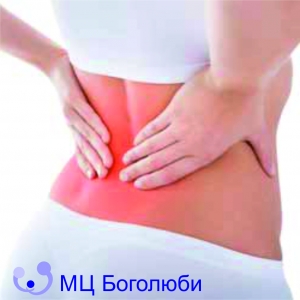Renal colic manifests itself in the form of sudden pain in the side, which may be preceded by general malaise, nausea and even vomiting. The painful crisis is typically spasmodic, very intense, lasts for several minutes, and is usually associated with short periods of remission.
What is the reason?
The causes of renal colic are divided into three types, depending on the type of irritant:
• obstructive ;
• mechanical;
• inflammatory.
However, the main cause of acute renal colic is the presence of stones in the kidneys and/or urethra.
Kidney stones are formations of various sizes, resulting from the precipitation and aggregation of certain substances present in the urine, such as mineral salts or organic compounds. Over time, stones tend to pass from the kidneys to the lower urinary tract, then to the ureters, from there to the bladder, and finally to the urethra to be passed out in the urine.
These stones can interfere with the normal flow of urine and cause urinary tract infections. In the most severe case, the stone continues to grow, completely occupying the cavity of the renal pelvis, thereby disrupting the functionality of the organ. When a stone pushed out by urine migrates from the kidney to the ureter and more or less blocks it, renal colic occurs.
Where do kidney stones come from?
Several factors contribute to the formation of stones, including an unbalanced diet, especially an excess intake of proteins and sodium; certain inflammatory processes, frequent urinary infections, or conditions that slow down the flow of urine. Of great importance is the family predisposition and low intake or increased loss of fluids (as is the case in the case of chronic diarrhea or profuse sweating).
Other predisposing factors are anatomical abnormalities and certain metabolic abnormalities leading to elevated urinary calcium levels, including hyperthyroidism and hyperparathyroidism . Cold, stress, overeating, food intolerance, flatulence can aggravate renal colic.
How painful is renal colic? This is directly related to the degree of obstruction of the outflow of urine in the ureter.
How long does an attack last? In most patients, the peak of pain is reached approximately 1-2 hours after its initial onset. Renal colic may be transient in duration and resolve spontaneously. In no case should you ignore the symptom. For advice, you can contact the urologist of the Bogolyuby Medical Center in order to establish an accurate diagnosis and conduct targeted treatment.
What to do?
To reduce the intensity of pain, the doctor may prescribe antibiotics (if the bacterial nature of the infection is established), painkillers (non-steroidal anti-inflammatory drugs) and antispasmodics . If the cause is kidney stones, then a pharmacological or surgical approach is considered to correct the urinary tract obstruction.
To facilitate the removal of stones, attention should be paid to changing the diet and increasing daily fluid intake .
The latter approach involves the consumption of large amounts of minimally saline water to ensure the excretion of more than 2 liters of urine in 24 hours. This hydroponic type of therapy can be practiced only on medical advice. Drinking therapy is based on a simple concept: an increase in urine volume promotes the spontaneous expulsion of small stones from the kidneys and prevents their progressive growth . As a rule, in the case of small stones, up to 5-7 mm, the process of spontaneous expulsion can take from 2 to 15 days.
If such expulsion of the stones is not possible and the drugs are ineffective, the kidney stones are removed or crushed by shock waves. So in the medical center " Bogolyuby " practiced laser lithotripsy and surgical removal of staghorn stones. The choice of the most appropriate intervention depends on the characteristics, size, location and number of stones that caused renal colic.
















